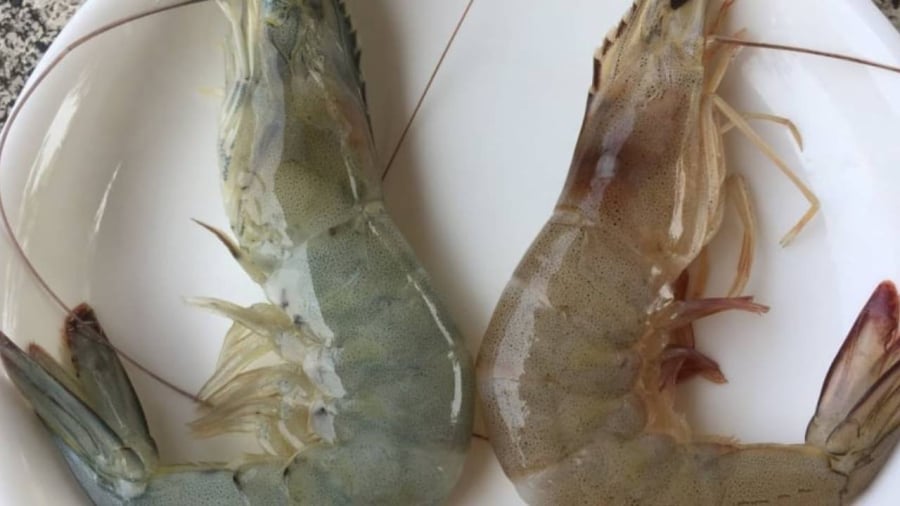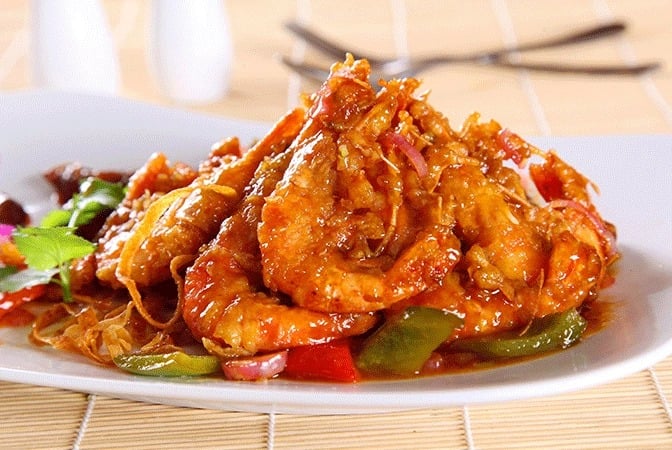Tips for Identifying Farmed and Wild Shrimp at the Market
Many people tend to choose shrimp based on their instincts or price alone when shopping, unaware of the significant differences in quality and nutritional value between farmed and wild shrimp. As wild shrimp are usually more expensive, some unscrupulous sellers may substitute farmed shrimp and label them as “wild” to increase their profits. Therefore, it is essential to know how to distinguish between the two.
In terms of appearance, farmed shrimp often have darker shells, softer and less firm meat, and a less sweet taste. In contrast, wild shrimp have brighter shells, firmer meat, and a distinct sweet taste when cooked. This is the most noticeable sign that buyers can visually inspect and experience when cooking.

When making a selection, opt for live shrimp that are actively swimming, have hard shells, bright colors, and no strange odors. Fresh shrimp usually have intact legs and firm meat that does not separate from the shell. Avoid shrimp with signs such as cloudy shells, blurry eyes, flesh turning light pink, detached heads, black legs, or slime—these characteristics indicate that the shrimp are not fresh or hygienic.
If you’re buying pre-boiled shrimp (usually shrimp that have been caught and boiled on the boat), inspect the tail and shell joints. Straighten the shrimp body under light: if the space between the shell and meat joints is wide, it means the shrimp have been overcooked or frozen for too long—they are not as fresh as desired.
Delicious and Nutritious Shrimp Recipes That Are Easy to Make
1. Garlic Butter Shrimp – A Rich and Aromatic Dish
Garlic butter shrimp is a favorite among seafood lovers for its indulgent combination of buttery goodness and the distinctive aroma of garlic. This dish is easy to prepare and suitable even for novice cooks.
Instructions:
Step 1: Clean and prepare 500g of large shrimp by removing the antennae and legs, and then rinsing them thoroughly. Lightly fry the shrimp until both sides turn color and the flesh firms up.
Step 2: In a separate pan, melt 5 tablespoons of vegetable butter and add 1 finely chopped clove of garlic. Sauté until fragrant, then season with ½ tablespoon each of sugar, salt, and pepper, along with chopped chili and spring onions.
Step 3: Once the sauce thickens, remove from heat and pour over the fried shrimp. Serve immediately while hot.
2. Coconut Steamed Shrimp – A Gentle, Sweet Dish for All Ages
Coconut steamed shrimp is characterized by its mild and sweet flavor, derived from fresh coconut water. This dish is ideal for young children and the elderly, as it requires minimal seasoning while retaining the natural taste of seafood.
Instructions:
Step 1: Clean 400g of shrimp by removing the antennae, legs, and the black vein along the back, then rinse well.
Step 2: Pour the water from one coconut into a pot, adding one lightly crushed shallot and a pinch of seasoning. Bring it to a boil.
Step 3: Add the shrimp and cook for about 2 minutes until they turn red.
Step 4: For presentation, arrange the shrimp around the coconut to make the dish more appealing and attractive.
3. Soy Sauce Steamed Shrimp – An Oriental Delight
Soy sauce steamed shrimp is an Asian-inspired dish that uniquely blends the sweetness of shrimp with the subtle saltiness of soy sauce. Despite its simple preparation, the final product is impressive.

Instructions:
Step 1: Clean and prepare the shrimp by removing the black vein along the back and letting them drain.
Step 2: Sauté chopped shallots, adding in shredded wood ear mushrooms, soy sauce, a touch of sugar, and vinegar. Bring it to a boil and remove from heat.
Step 3: Slit the shrimp’s back and fill the cavity with the mushroom mixture. Arrange the shrimp on a plate and steam for about 10 minutes, or until they turn a golden orange color, and they are ready to be served.



































